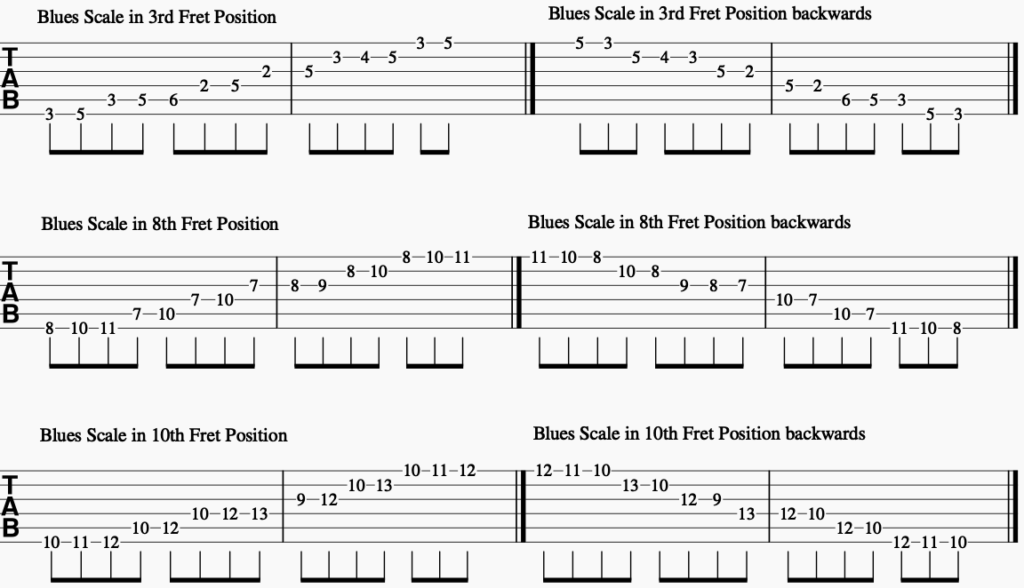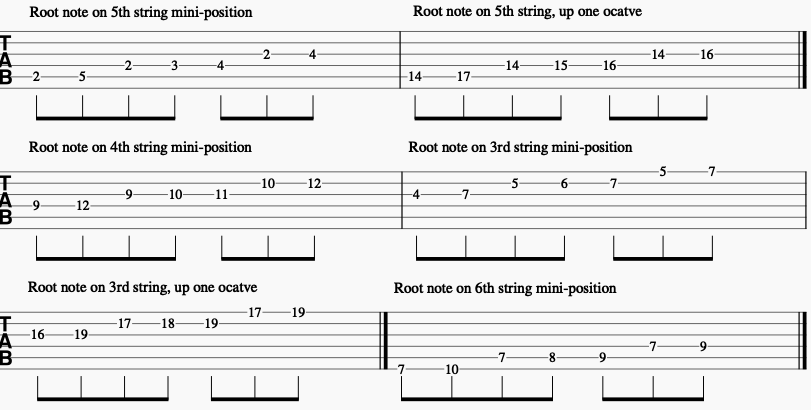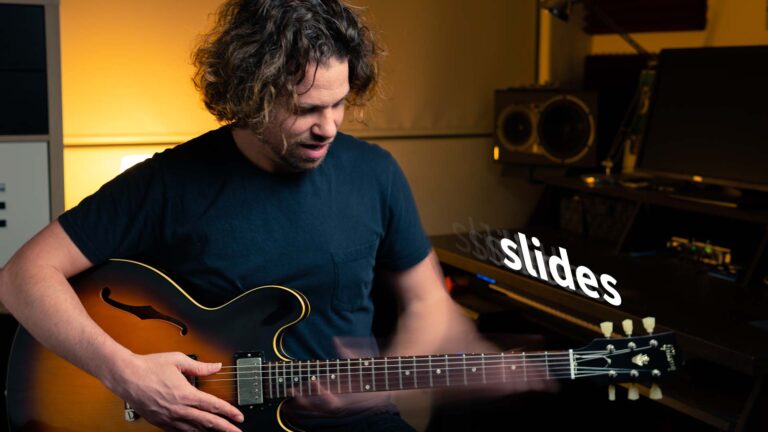The Blues Scale And Beyond (pt. 6/6)
For the past 5 weeks we’ve been looking at the pentatonic scale and how to play horizontally all of the fretboard of the guitar in any key. By now you have a wide range of tools to help you with this, so we’re going to spend one final lesson on this topic.
We’re going to look at how to add some options of notes to add to our scale that you can include in your solos. These notes are like adding some spice or colour. You can think of your pentatonic scale as the bread and butter, and these extra notes are your something something something.
THE BLUES SCALE
After exploring a few different keys in the last lesson, let’s come back to our A minor pentatonic scale and look at changing it into a blues scale. All you have to do is to add a d-sharp between the D and E. One octave of this scale in the 5th fret position looks like this:

Now we have a 6 note scale. All we did was add one note. To complete the whole position, we just need to find where all the D#’s (also called Eb) are. There’s only one more in this position. It’s on the 8th fret of the 3rd string, as shown below:

Once you’ve played the scale up and down as written in Fig.1b, just improvise with this new scale, emphasising our 2 D#’s. Try to play the D# a lot. Your purpose here is to get comfortable with this new note, not to move yourself with your amazing soloing! So mix it up, and play D# heaps.
The next thing you could do is to find D# in every other position of A Minor Pentatonic Scale. That means that you need to first know those 5 pentatonic scale shapes that we learned in lesson 4 of this pentatonic scale series. So knowing that first will help you with this.
Here are 3 more of those positions converted into blues scales by adding D#’s between every D and E note:

APPLYING THE PENTATONIC SCALE EXERCISES TO THE BLUES SCALE
During this pentatonic lesson series, we’ve covered many approaches to working on scales. Now that you are aware of those different approaches, you can apply them to any scale you like. Here we’re using the blues scale so the amount of new material is low, it’s just about adding that D# to what you already know.
Let’s go through some of the approaches below, but this time I’m not going to give you every single example. Now that you have the tools, you can work them out and don’t be afraid to revisit those previous lessons if you are having trouble.
SINGLE STRINGS
In lesson 1, we practised and improvised with A minor pentatonic on single strings. Do the same with the blues scale. Here it is on the 6th and 3rd strings:

STRING PAIRS
We can also take some of the patterns we learned on string pairs, like we did in lesson 2. Here is example of the blues scale on the E&A string pair:

And here is another example of the same thing on the A&D string pair:

CONNECTING 2 POSITIONS WITH SLIDES
In the 3rd part of the series, we connected 2 positions of the pentatonic scale with slides. Here is an example of that on the GBE string set, using the blues scale:

TRANSPOSING THE BLUES SCALE
Since we’ve already worked on the positions of the blues scale like we did in lesson 4, let’s skip to the transposing ideas we worked on in lesson 5.
In that lesson we worked on one octave ‘mini positions’ of A minor pentatonic scale and transposed them into different keys. Let’s do that with the blues scale, but I’m going to just use B minor blues scale for all of the examples:

BEYOND THE BLUES SCALE
In this lesson, we arrived at the blues scale by simply adding an extra note to the pentatonic scale. Theoretically you could add any note to the pentatonic scale to get your own hybrid scales. The thing is though, you don’t have to think of it as a new scale, you can just start to stretch the language you have in areas of the fretboard.
For example, take any note in the pentatonic scale and bend it up a whole-step or half step. Sometimes you will find that a whole-step sounds good, other times the half-step sounds better. The key is to use your ears and if you like it, then use it. If not, save it for the end of the gig when you want to clear the room.
I’m not going to write all the possibilities down here, but if you’re interested in learning more about this technique of bending to add different colour-tones to your pentatonic scales, check out the latter part of the video (insert link) which looks at this idea in more detail.





